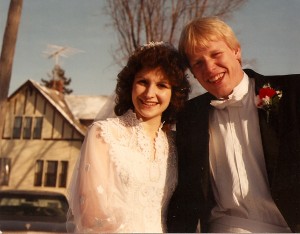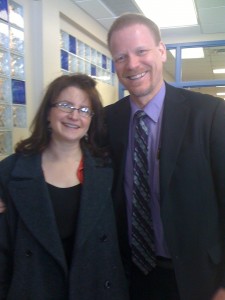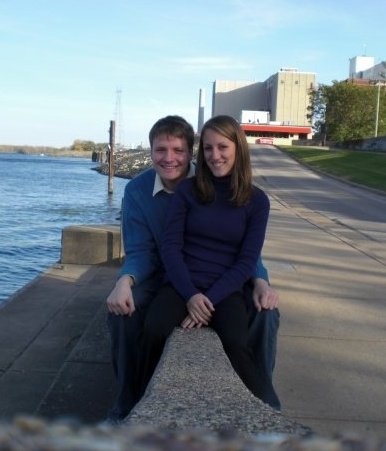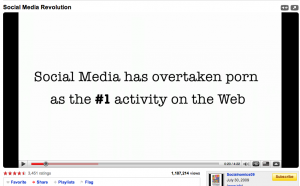At a certain level, it’s important to think strategically about how your organization will use social media.
After all, if Thesis 4 is true, and if social media really are the defining communications trend of the third millennium, then using these powerful tools in a way that aligns with your overall strategy just makes good business sense.
Strategy is “a plan of action or policy designed to achieve a major or overall aim.” Aimless use of social media is no better than aimless advertising or product development research. It’s never a good idea to devote your organization’s time and resources to an activity that doesn’t relate in some way to an overall strategy. Aimless is pointless.
As B.L. Ochman has chronicled, there’s no shortage of self-proclaimed gurus, experts, specialists and strategists — nearly 16,000 at her last count — on Twitter. She also has a good post on “The only two questions you need to ask your prospective social media agency.” The problem I see with many of the self-proclaimed “gurus” is that they lack experience in tying social media to organizational strategy, and as B.L. says, “they’ll be learning on your dime.”
It’s much better for YOU to learn on your dime. Or your time.
After all, you know the strategic initiatives in your organization. The outside consultants and agencies don’t. Instead of paying them to learn about your organization, why not take the time to learn about social media so you can see how these tools can support your goals?
There is certainly a place for agencies to help in this area, especially if you have more money than time. They may be able to help you refine your plans, and bring perspective from other similar organizations to help you sell management on your plans.
But instead of insisting that you have a grand, fully developed strategy before embarking in social media (and which is accompanied by a hefty planning and consulting price tag that will make the ROI harder to prove,) I would suggest there are some goals compatible with social media strategies that apply for most organizations.
So here are a few goals you might want to pursue in the new year, using social media:
- Improving communication and collaboration among employees. Find a work unit in part of your organization that doesn’t deal with your most proprietary or confidential information, and encourage those employees to pilot use of Yammer, PBWiki or other networking and collaboration tools.
- Preventing brand-jacking. Claim your organization’s name on popular social networking sites to keep impostors from posing as you. That’s what we did with our Mayo Clinic Twitter account, Facebook page and Mayo Clinic YouTube channel.
- Improving customer service. Use social media tools like Twitter to listen to customers. Comcastcares is an example of this.
- Reaching niche “audiences” with in-depth content, and helping those “audiences” coalesce into communities. A YouTube channel, blogs and podcasts all may be good tools to use in reaching this goal, as you can provide information and resources to people who really want it, instead of using expensive advertising to interrupt those who don’t.
- Learning all you can about social media. By becoming conversant in social media and accustomed to its norms and mores, you’ll see many more specific applications for your work that will support your organization’s goals. I can recommend lots of books, but hands-on experience is essential to understanding. That’s why you might want to become a SMUGgle.
Your social media strategy doesn’t have to be perfect right away. In fact, I believe it should continually evolve as you learn more about the tools and see new applications.
The other point I want to emphasize from the definition of strategy is that it is a “plan of action….” Action without a goal is likely unproductive, but planning without action is even worse. By acting rashly without full consideration you might possibly do the right thing: you could just get lucky. But analysis paralysis means you will consume resources with no hope of accomplishing anything.
So those who seem to be the greatest defenders of strategy run the risk of undermining it.
To avoid this, identify one or two goals for your use of social media, either picking from the list above or something else you have in mind. Goal #5 can always be your personal entry point, if necessary.
Then execute against that plan, putting your strategy into action. General (and later President) Dwight Eisenhower famously said “plans are useless, but planning is indispensable.” I believe his wisdom is best applied in an almost continuous planning process that is accompanied by continuous execution and modification.
Remember, it’s a lot easier to steer a moving car than it is to get it started from a dead stop. If you find yourself going off course, you can always steer back or even tap on the brake. And by choosing some small but well-defined (and likely successful) social media projects, you can build momentum.
In a future post, I’ll tell how we used a series of mini-plans at Mayo Clinic to grow into full-scale incorporation of social media. We’ve had some minor course corrections along the way, but through the process we’ve learned a lot and built momentum that will help carry us forward.







